CENTRAL BALKAN NATIONAL PARK: welcome to mother nature
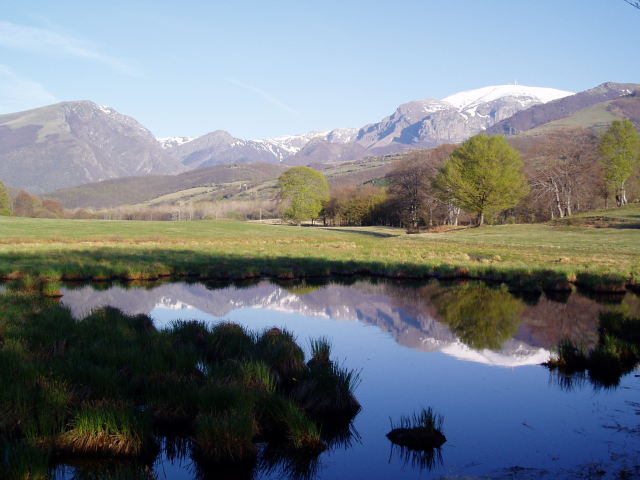
Central Balkan National Park is one of the most valuable and largest protected areas in Europe. The Park was established for the conservation of the unique nature of the Central Stara Planina Mountain as well as for the preservation of local culture and customs. Amidst magnificent landscapes, the National Park protects the primary habitats of rare and endangered species and communities, self-sustaining eco-systems of outstanding biodiversity that are of high significance to the world scientific and cultural community.
Covering an area of 716 sq.m. in the central parts of Kodzha Balkan, the park comprises centuries-old beech forests, breath-taking waterfalls and deep canyons, vast meadows with lush grass and herbs and imposing peaks.
The highest of the Stara Planina peaks BOTEV peak is also located within the Park territory.
One-third of the Park territory is comprised of nine reserves in which strict protection of species is observed. Four of the reserves - Boatin, Tzarichina, Steneto and Dzhendema are part of the World Biosphere Reserves Network under the UNESCO Man and Biosphere Program. Central Balkan is one of the few places in the world in which wildlife and wilderness have remained untouched. For this reason the Park and eight of its reserves are on the UN List of Representative Protected Areas.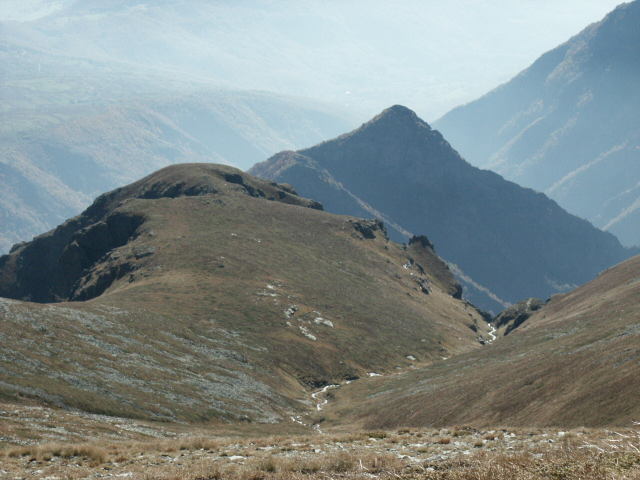 Throughout the ages, Stara Planina has gone through several names, such as Hemus, Haymon, Matornye Gory, Zegos. Proto-Bulgarians called it Balkan, meaning “the bright morning sun”.
Throughout the ages, Stara Planina has gone through several names, such as Hemus, Haymon, Matornye Gory, Zegos. Proto-Bulgarians called it Balkan, meaning “the bright morning sun”.
Within this rugged environment, man has lived harmoniously with nature for centuries. The difficult access to the passes, canyons and peaks has also provided natural shelter for the surrounding communities. Several historical monuments were found within the Park, including remains of Thracian strongholds, ruins from Roman times, watchtowers and camps, medieval buildings, roads and fortresses.
The spirit of the Bulgarian National Revival Period (18-19th C.) can be observed in numerous churches, monasteries as well as in the local folklore. The Balkan still keeps the legends for the brave Krali Marko (King Marko) and Valchan Voyvoda (Valchan the Chieftain). There are also several monuments dedicated to national heroes such as Vassil Levsky, Hristo Botev and the 1876 April Uprising insurgents.
The region of the Central Stara Planina is famous for its crafts. The National Fair of Oreshak attracts artisans and artisans from all parts of Bulgaria and many other countries. The museums in the town of Troyan have a rich collection of ceramics, woodcarving and icons typical for the region. The Historical Museum in Teteven presents local life and traditions from 18th-19th centuries. Exhibitions in Klissura, Karlovo and Kalofer display once-thriving crafts, including the production of rose oil, decorative woolen braids, leather goods, homespun cotton and wool textiles, traditional shoes and carpets. Many old traditions carry on to present days. Troyan hosts the Days of Plum and Plum Brandy (Slivova Rakia); Klissura celebrates the Potato Day; Gabrovo holds the Festival of Humour and Satire. An annual Festival of Roses is held in the towns of Karlovo and Kazanlak in accordance with the rose-picking season. Unforgettable are the carnivals and processions of mummers (kouckeri) in the towns of Pavel Banya, Tuzha, Sushitsa, Karlovo, etc.
The Central Balkan is situated in the center of the country. Three different climate types converge on the main crest of the mountain: alpine air from 1,000 m above sea level, moderate continental from the north and transitional-continental, influenced by transitional-Mediterranean from the south. The weather in Central Stara Planina is often severe: strong frequent winds, abundant rain and snowfall, thick fog and low temperatures. Frosty winters are typical for the higher elevations; the average temperature in January varying between 9C and 3C. Snow stays for six months and by the end of March snow cover might be from 180-220 cm. Dense fogs often cover the peaks of Stara Planina. Spring comes late. Autumn is characterized by a milder and generally more favorable climate. Frequent and strong winds are typical for the mountains. Over the ridges winds blow at a speed of more than 10m/sec over 150 days a year.
Due to the powerful impact of water and wind over the course of thousands of years, an imposing relief has been shaped. Rolling ridges and karst sit aside deep canyons, steep rock walls and caves. Amidst the rocky landscape of about 2,000 hectares there are several unique structures, including the natural rock bridge (Markovata Dupka) and a group of rock needles (Kalchovite Kamani). The Park hosts massive rock formations, centuries-old forests, steep ridges as well as the rock belt Dzhendemite. A system of canyons and gorges, unique for Bulgaria, include the Cherni Ossum River Canyon, the Stara Reka River Pass, Tazhansko Gorge and Sokolna and Byala Reka River Valleys.
There are numerous deep caves and abysses. Such feature make the Steneto reserve a remarkable place to visit. The deepest cave in Bulgaria, Raychova Dupka, is located within the Park territory, with a total length of 3,333 m and height of 377 m.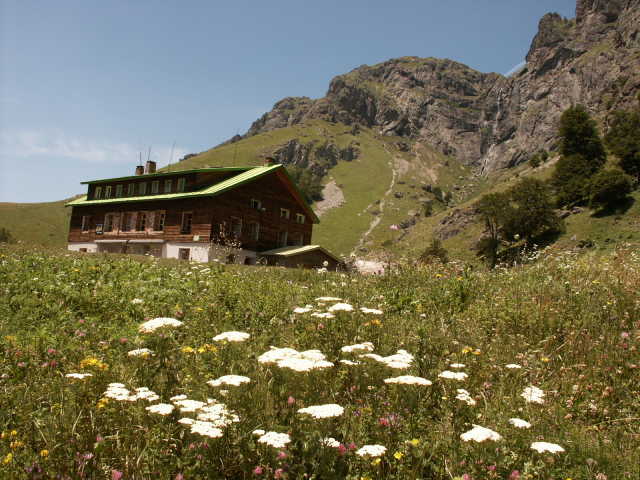
The ridge of Stara Planina serves as the main watershed of the Black Sea and the Aegean Sea catchment basins. From the mountains, the Vit, Ossum and Rossitza rivers flow into the Danube and Black Sea to the north, while the Topolnitza, Stryama and Toundzha Rivers south into the Aegean Sea.
In many locations rivers fall from steep cliffs and form picturesque waterfalls called by the local people “praskala” (“sprinklers“). Several amazing waterfalls can be found in the Park. Among them is the highest in Bulgaria - Rayskoto Praskalo (“The Paradise Sprinkler”) at 125 m height., as well as Karlovsko Praskalo, Vidimsko Praskalo and etc.
The Central Balkan forests cover both the southern and northern parts of the mountains. More than 65% of the forested areas of Central Balkan are over 100 years old. Stara Planina is the kingdom of beech trees. The beech woods in the Park, along with the adjacent forest, cover about 60,000 hectares and represent the largest, most compact and relatively untouched beech tree massif in Europe.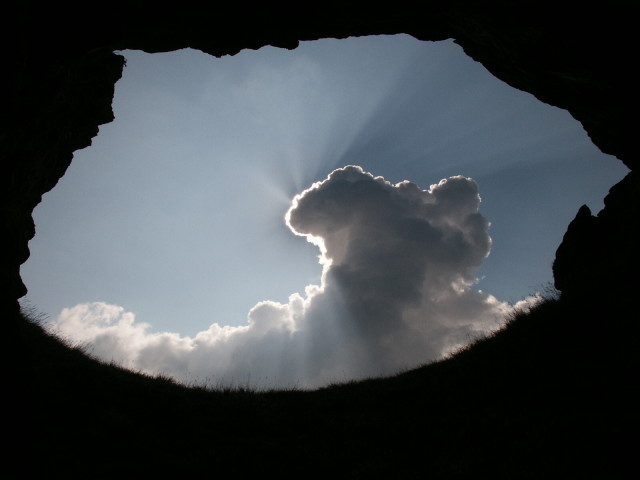 The belt of xerotherm (drought-resistant and thermophilous) oak forests is located in the lower parts at a height of 550-650 m. and in some areas, especially those with more sunshine and rock up to 800-900 m. above sea level.
The belt of xerotherm (drought-resistant and thermophilous) oak forests is located in the lower parts at a height of 550-650 m. and in some areas, especially those with more sunshine and rock up to 800-900 m. above sea level.
A significant number of endemic and relict species can be encountered in the Park.
Within the boundaries of the beech-tree belt, the European silver fir can be frequently found as it makes up to 6% of the forests in the park.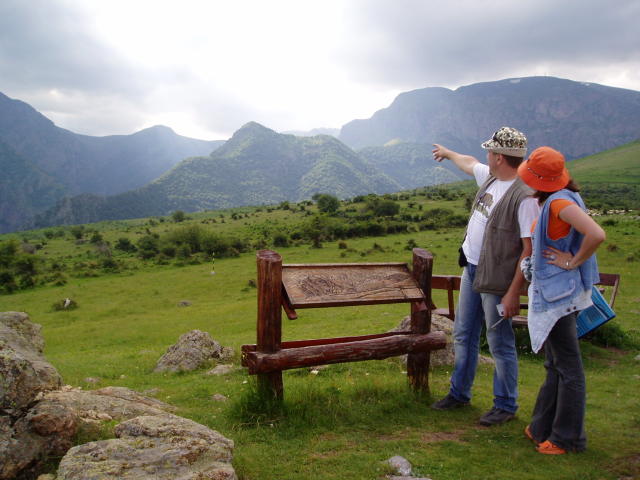 The forests of the park are of utmost significance in terms of biodiversity conservation. Seventeen forest habitats identified and described in the Central Balkan are included in the European List of Areas of Special Conservation Interest under the EU Habitats Directive.
The forests of the park are of utmost significance in terms of biodiversity conservation. Seventeen forest habitats identified and described in the Central Balkan are included in the European List of Areas of Special Conservation Interest under the EU Habitats Directive.
Biodiversity plays an important role in forest ecosystems. Venerable beech trees, sycamores, Macedonian pines and European silver fir provide natural habitats for hundreds of animals, plants, mushrooms and microorganisms.
The impressive diversity of plants is another unique feature of Central Balkan. More than 2,000 species and subspecies of plants have been identified within the Park. Among them there are 1,900 vascular plant species and subspecies, 188 species of algae, 229 species of moss and 15 species of fern. This is more than half of Bulgaria’s total flora.
Medicinal plants are represented by 166 species.
Rich diversity of wildlife and birdlife is also significant for the Park. It is an exceptional reserve for Bulgaria. On its territory, which is just 0.6% of the area of the country, live 66% of the mammals in Bulgaria, 40% of the reptiles, 45% of the nesting birds, 50% of the amphibians, and 70% of the invertebrates.
The brown bear is the symbol of the National Park. Central Balkan hosts the largest protected habitat in Europe for the brown bear.
Of the 30 species of European bats, 18 can be found in the Park. Eight of the species are considered globally endangered. Among their favourite shelters are caves and old woods.
Herbs in the park are also of high significance in terms of biodiversity conservation. Twenty-two species are listed in Bulgaria’s Red Book, four of which are endangered species and 18 are considered rare in Bulgaria.
In the Park there are 256 identified mushroom species. Among the edible species well known for their delicious taste, are boletus, chanterelle, parasol mushroom and field mushroom.
Leisure Activities
The National Park provides excellent opportunities for hiking. Those who follow the winding turns of the steep paths can feel the serenity and wisdom of the untouched nature. There are 670 km of hiking paths. The trails are well-marked. Throughout the year, 20 chalets and 4 rest houses with total capacity of 1,700 beds are available for tourists. The well-developed system of places for short rest, camping and bonfires, as well as many panoramic sites makes it easier for mountaineers to enjoy their stay. Specialized routes are developed for fans of extreme sports, horse riding and mountain biking. The neighboring villages and the towns of Kalofer, Karlovo, Sopot, Troyan, Gabrovo offer a large number of small hotels, restaurants and shops and opportunities for accommodation, meals, purchase of souvenirs, as well as for hiring guides.
We would like to encourage you to experience ecotourism and become part of this magnificent and generous gift of mother nature, visit Central Balkan National Park in Bulgaria!
Enjoy more photos from the beautiful Central_Balkan
read more articles
